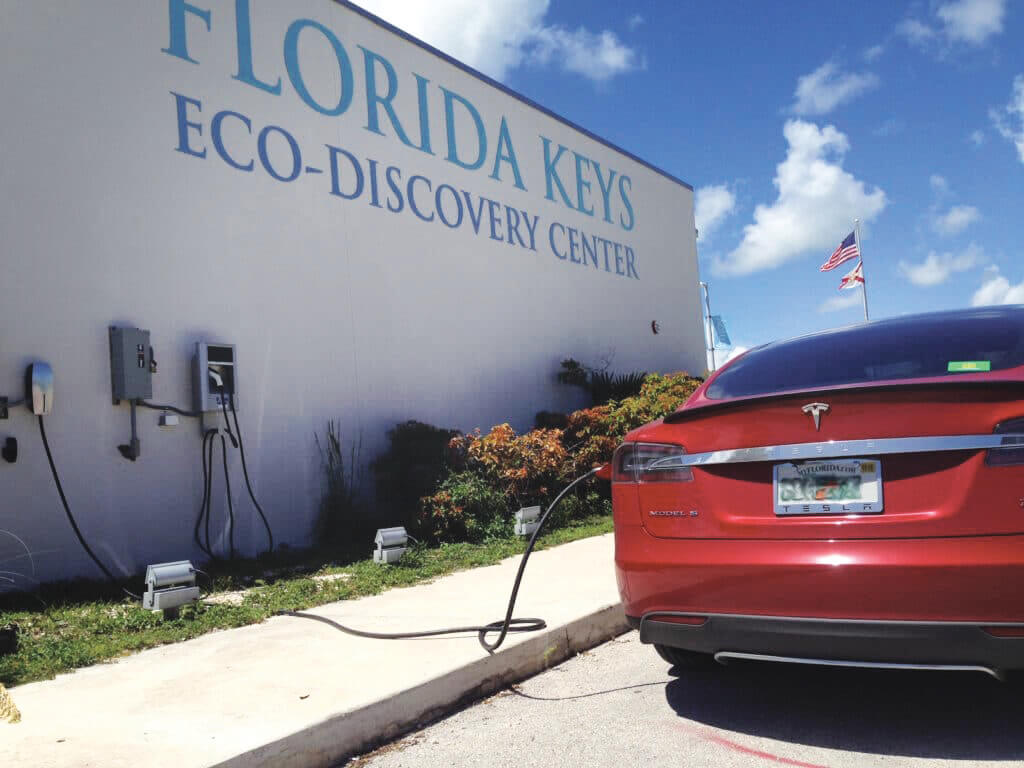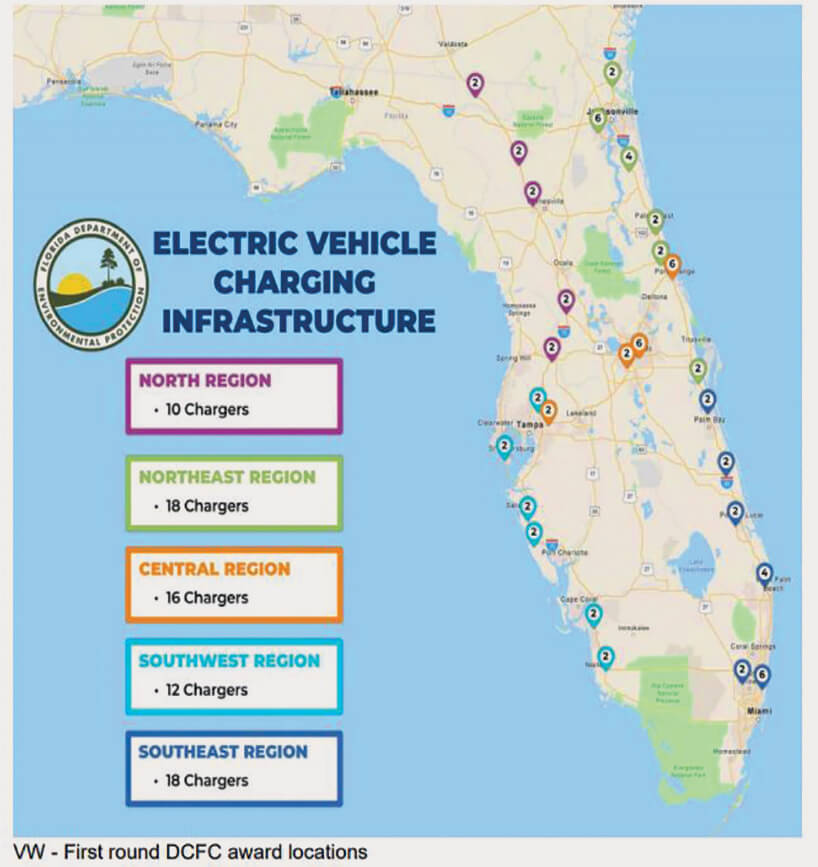By SHARON BENNETT

You probably heard that the Inflation Reduction Act (IRA) passed, promising cash benefits for those who buy certain (mostly American-made or with approved batteries) electric vehicles (EVs), so EV growth is sure to rise.
The Energy.Gov’s Transportation Fact of the week shows that sales of hybrid-electric vehicles (HEVs) in the U.S. increased by 76% from 2020 to 2021. (HEV’s have some gasoline along with a battery that charges from regenerative braking).
Florida is second in the nation in electric vehicle ownership. It’s behind California, ahead of Texas, Washington, and New York.
A prediction from Florida Power and Light Company notes that there could be nearly 600,000 EVs by 2030 in the areas it serves and 8.1 million by 2040.
Florida’s first-ever electric car roadmap, produced by the Department of Agriculture in 2020, points out that most electric drivers live a few miles from the coast. It also points to areas where more electric car chargers have been or will be added to help traffic flow.
Susan Glickman, spokesperson for the Florida Clinicians for Climate Action, said in a statement after the IRA passed that this “investment would reap big benefits for Floridians.
Installing fast chargers along evacuation routes will increase confidence in going electric.
Electric vehicles purport to be key to slashing climate change and pollution and fighting the extreme heat, flooding and sea level rise already harming Floridians’ health.
Clean cars save on fuel and also avoid tailpipe emissions believed to cause asthma attacks, emphysema, and some cancers.”
A report in “Urban Science” a Business Scientists’ journal for the auto industry, notes EV sales outside of California this year are growing fastest in Florida and the Southeastern United States.
It also says that EV sales in the U.S. increased 41% in the first half of 2022 compared to the same timeframe in 2021; the share of EV sales also increased from 3.6% of all U.S. new-vehicle sales in the first half of 2021 to 6.2% during the same period in 2022 — a 72% year-over-year increase.
Florida’s lead over New York widened to more than 1,000 units during Q1/Q2 of 2022, which means that Florida had a 64% year-over-year increase in EV sales during Q1/Q2 of 2022.
Florida is now the second biggest selling market for electric vehicles behind only California.
While industry sales dropped during the first and second quarter of 2022, Urban Science reports that EV sales in the U.S. increased 41% by mid-year. Florida’s 64% year-over-year increase in EV sales during Q1/Q2 of 2022, keeps the southeast region the fastest-growing region for EV sales in the U.S. during the same period with a 52% uptick in EV sales overall.

The IRA signed on 8/16/22 holds some surprises, as not every state, company, or dealer finds in it everything it would like. Leaders are still reviewing it carefully.
Jennifer Szaro, CEO of the Association of Energy Services Professionals in Orlando said, “We are all excited about opportunities the IRA funding will bring. There are a few unique challenges to overcome to ensure success. The limitations of mineral sourcing on an already tight supply chain have many experts nervous about how this will affect vehicle and battery manufacturers to keep up with the resulting demand for new vehicles. However, it should be extremely beneficial to the secondary vehicle market and to lower-income buyers.
The other area we need to work through is sufficient charging infrastructure networks.
They must be dependable and interoperable to build consumer confidence in the market.”
Clean energy requirements in the bill would mean that batteries must have at least 40 percent of materials sourced from North America or a US trading partner by 2024 in order to be eligible for a $7,500 tax break. By 2029, battery components would have to be 100 percent made in North America.
These stipulations are intended to accelerate the deployment of clean energy technologies, reduce global emissions, lower energy prices, help export American innovation, strengthen our economy and build a reliable and affordable energy sector.
They should also increase energy production at home and accelerate energy innovation.
The figures run counter to some national political and cultural trends that make the broad assumption that blue states have more of a preference for and interest in electric vehicles.
Investments in EVs and other green technologies are considered measures of environmental, social and governance (ESG) practice that may show a shift in business, where sustainability and citizenship are no longer seen as philanthropic or “on-the-edge” activities but as critical to the long-term success of the overall business and the climate.●














































